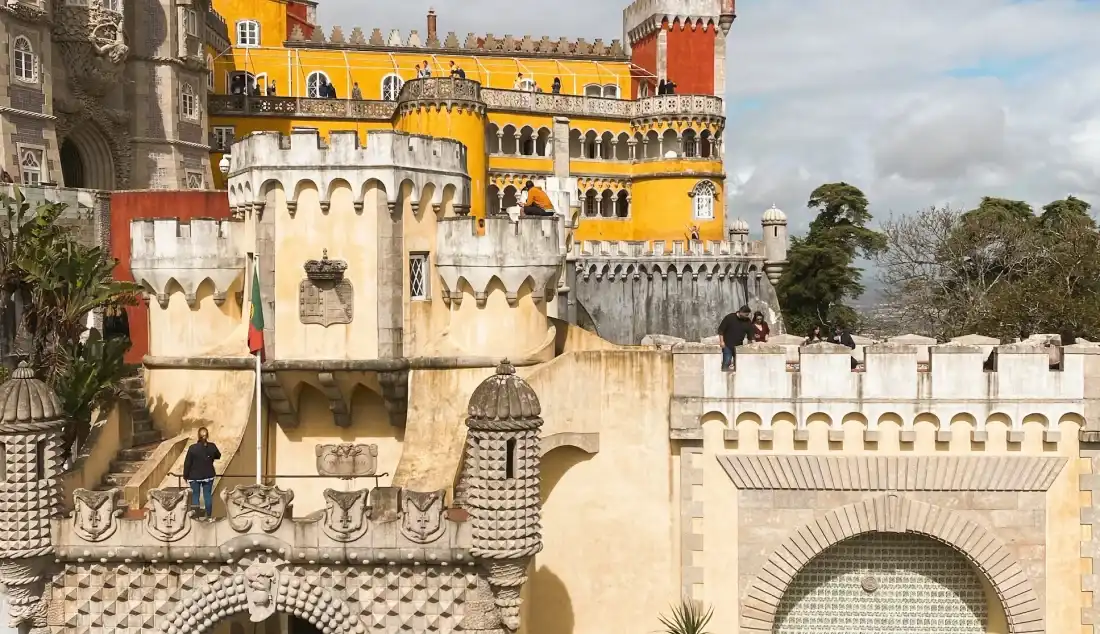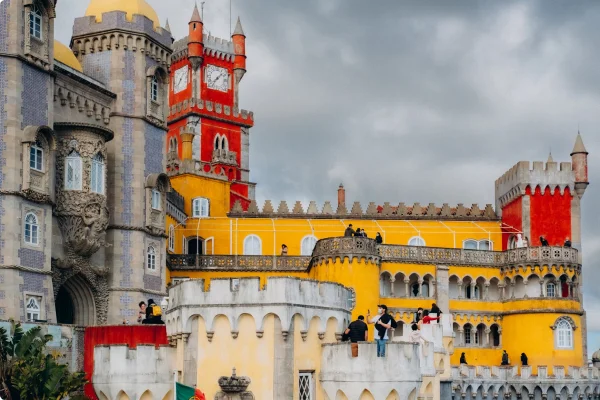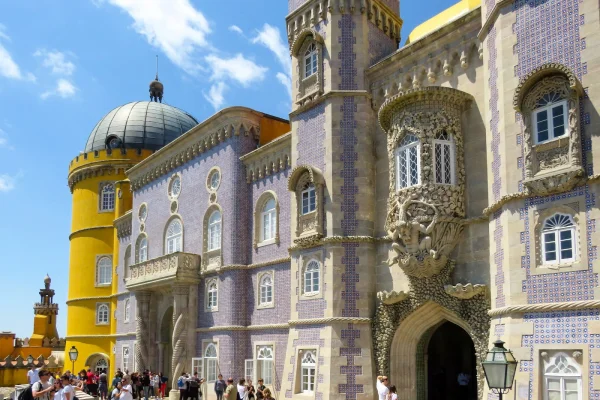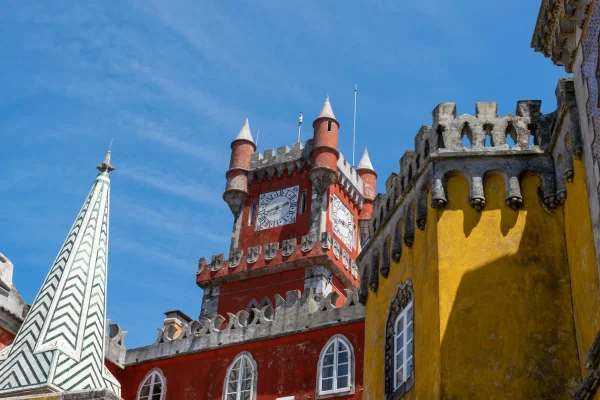The Pena Palace is a famous symbol of 19th-century Romanticism in Portugal. It stands on a hilltop in the Sintra Mountains. This colorful and unique palace has a long history that shows Portugal’s cultural and architectural heritage.
Timeline of Pena Palace

The architect behind Pena Palace was Wilhelm Ludwig von Eschwege, a German engineer and amateur architect. His vision, combined with the artistic input of King Ferdinand II, resulted in the palace’s distinctive and eclectic design. Eschwege’s background in mining and engineering played a crucial role in the palace’s construction, particularly in the innovative use of materials and techniques.
Who built Pena Park?
King Ferdinand II created Pena Park. He turned the empty hilltop around the palace into a green and lush park, inspired by the English gardens he loved. The park is over 200 hectares and has many different plants, including native and exotic species from around the world. The park’s design shows the Romanticist idea of harmony between nature and architecture.
Pena Palace Construction
Building Pena Palace was a huge project that took more than ten years to finish. It started in 1842 and was mostly done by 1854, though some small additions and changes were made later.
The construction of Pena Palace was done in several phases:
Building Pena Palace was not just about architecture; it also showed King Ferdinand II’s artistic ideas and his love for nature. The palace stands as a symbol of the Romanticist style and is one of Portugal’s most cherished landmarks.
So now that you know the magnificent history of Pena Palace, we are sure you want to visit it. Every place holds a story and Pena palace is just like that. There are memories of King along with his family that we read in history books. Visiting a historical place is not just an exciting activity; it is also a fulfilling activity because we become part of something that happened so many years ago.

PENA PALACE TICKETS

PENA PALACE INFORMATION
Explore the highlights of Pena Palace. From its vibrant architecture to stunning views, uncover the essence of this… see more

VISITOR INFORMATION
